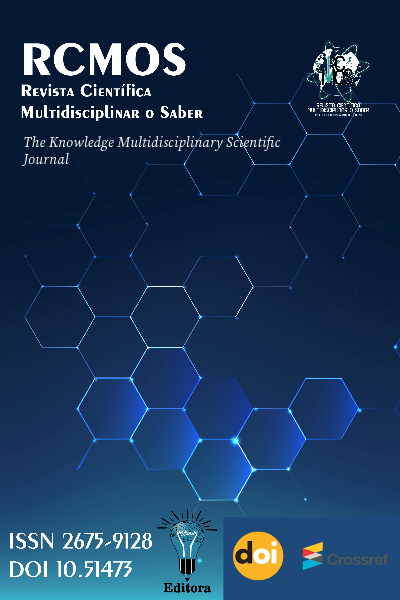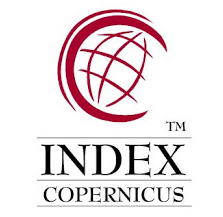Análise Comparativa dos Biomateriais Utilizados em Implantes Dentários:Osseointegração, Biocompatibilidade e Desempenho Clínico
Comparative Analysis of Biomaterials Used in Dental Implants: Osseointegration,Biocompatibility, and Clinical Performance
DOI:
https://doi.org/10.51473/rcmos.v2i2.2022.1085Palavras-chave:
Biomateriais, Implantes dentários, Titânio, Zircônia, Osseointegração, Biocompatibilidade.Resumo
Este artigo analisa comparativamente os principais biomateriais utilizados em implantes
dentários, destacando suas propriedades relacionadas à osseointegração, biocompatibilidade e
desempenho clínico. São abordados materiais clássicos, como o titânio e suas ligas, bem como
alternativas emergentes, como a zircônia. A partir de uma revisão crítica de estudos científicos
recentes, discute-se a interação destes biomateriais com o tecido ósseo, suas respostas
imunológicas e implicações clínicas. O trabalho enfatiza o papel das modificações de superfície
e os avanços tecnológicos na otimização dos resultados em implantodontia. Os dados
apresentados visam contribuir para a escolha fundamentada do material ideal na prática clínica
atual.
Downloads
Referências
ALBREKTSSON, T. et al. The long-term efficacy of currently used dental implants: a review
and proposed criteria of success. International Journal of Oral & Maxillofacial Implants, v. 1,
n. 1, p. 11-25, 2012. DOI: https://doi.org/10.1088/2058-7058/25/08/20
ANSELME, K. et al. The interaction of cells and bacteria with surfaces structured at the
nanometre scale. Acta Biomaterialia, v. 6, n. 10, p. 3824-3846, 2010. DOI: https://doi.org/10.1016/j.actbio.2010.04.001
BUSER, D. et al. Long-term stability of osseointegrated implants in augmented bone: a 10-
year prospective study in partially edentulous patients. Clinical Oral Implants Research, v. 28,
n. 6, p. 654-661, 2017.
CHEN, Q. et al. Modulation of macrophage polarization by nanotopography for bone
regeneration. Acta Biomaterialia, v. 51, p. 269-282, 2017.
ELIAS, C. N. et al. Titanium alloys for biomedical applications. Journal of the Mechanical
Behavior of Biomedical Materials, v. 7, p. 58-71, 2013.
GEETHA, M. et al. Ti based biomaterials, the ultimate choice for orthopaedic implants – A
review. Progress in Materials Science, v. 54, n. 3, p. 397-425, 2009. DOI: https://doi.org/10.1016/j.pmatsci.2008.06.004
HALLAB, N. J. et al. Metal sensitivity in patients with orthopaedic implants. Biomaterials, v.
, n. 23, p. 3053-3063, 2001.
KOHAL, R. J. et al. Clinical outcomes of zirconia dental implants: a systematic review.
International Journal of Implant Dentistry, v. 6, n. 2, p. 13-27, 2020.
LIU, X. et al. Advances in surface modification of titanium implants. Journal ofMaterials
Science: Materials in Medicine, v. 30, n. 7, p. 75-87, 2019.
NIINOMI, M. Mechanical properties of biomedical titanium alloys. Materials Science and
Engineering A, v. 243, n. 1-2, p. 231-236, 2008.
OSMAN, R. B. et al. The future of dental implants: a review on recent trends, advances, and
future perspectives. Journal of Dentistry, v. 92, p. 103260, 2019. DOI: https://doi.org/10.1016/j.jdent.2019.103260
RUPP, F. et al. Surface characteristics of titanium dental implants and their biological
interactions. Materials Science and Engineering C, v. 90, p. 670-683, 2018.
Downloads
Arquivos adicionais
Publicado
Edição
Seção
Categorias
Licença
Copyright (c) 2022 Louise Souza Coelho, Júlia Dal Paz (Autor)

Este trabalho está licenciado sob uma licença Creative Commons Attribution 4.0 International License.
Este trabalho está licenciado sob a Licença Creative Commons Atribuição 4.0 Internacional (CC BY 4.0). Isso significa que você tem a liberdade de:
- Compartilhar — copiar e redistribuir o material em qualquer meio ou formato.
- Adaptar — remixar, transformar e construir sobre o material para qualquer propósito, inclusive comercial.
O uso deste material está condicionado à atribuição apropriada ao(s) autor(es) original(is), fornecendo um link para a licença, e indicando se foram feitas alterações. A licença não exige permissão do autor ou da editora, desde que seguidas estas condições.
A logomarca da licença Creative Commons é exibida de maneira permanente no rodapé da revista.
Os direitos autorais do manuscrito podem ser retidos pelos autores sem restrições e solicitados a qualquer momento, mesmo após a publicação na revista.

















